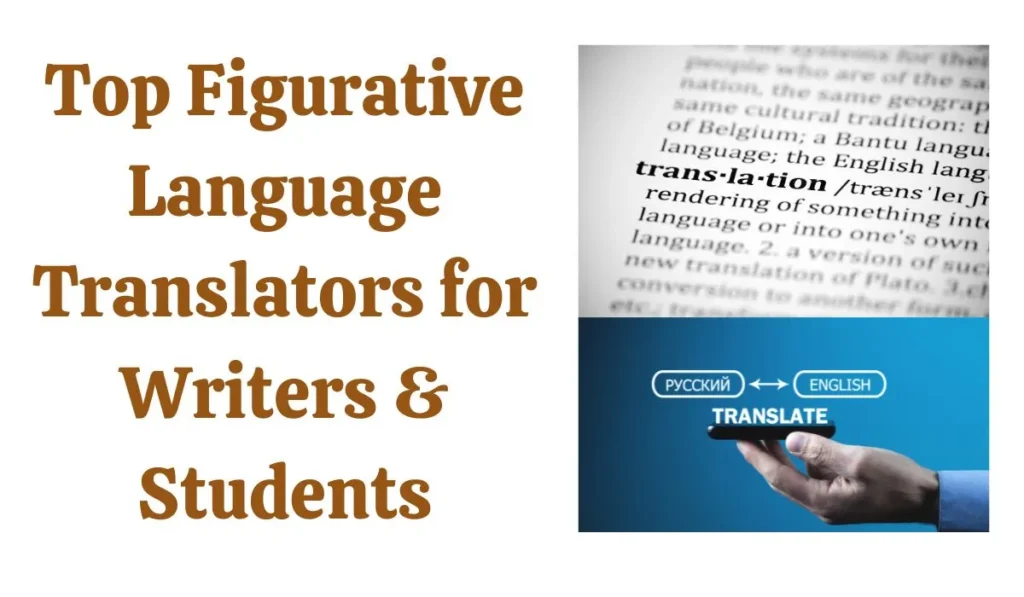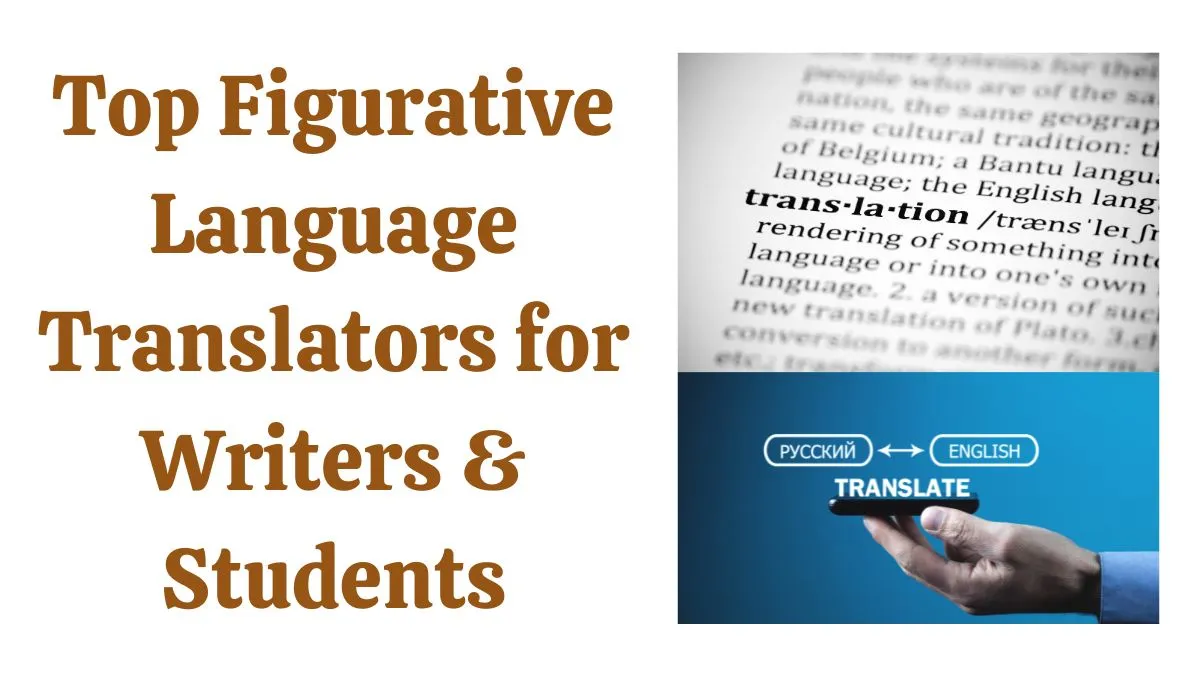
Figurative language is a cornerstone of human communication, adding depth, emotion, and creativity to both written and spoken words. It transcends literal meanings, allowing us to express complex ideas, evoke emotions, and create vivid imagery. From Shakespeare’s metaphors to modern-day advertising slogans, figurative language enriches our interactions and storytelling.
However, translating figurative language poses unique challenges. Unlike literal text, figurative expressions often rely on cultural context, emotional resonance, and linguistic nuances, making them difficult to convey accurately across languages. This is where AI-powered figurative language translators come into play, offering innovative solutions to bridge communication gaps while preserving the essence of the original message.
In this article, we’ll explore the concept of figurative language, its types, and the role of AI in translating these complex expressions. We’ll also delve into the challenges, case studies, and future trends in this fascinating field.
What is Figurative Language?
Figurative language refers to using words or expressions that deviate from their literal meaning to convey a more complex idea, evoke emotions, or create vivid imagery. The Cambridge Dictionary defines figurative language as “language that uses words or expressions with a meaning that is different from the literal interpretation.”
This form of language is significant because it allows writers and speakers to:
- Engage the audience’s imagination.
- Convey abstract concepts in relatable ways.
- Add emotional depth and artistic flair to communication.
The Importance of Figurative Language in Literature
In literature, figurative language is a powerful tool that transforms simple narratives into compelling stories. It helps authors:
- Create vivid imagery that immerses readers in the story.
- Convey emotions and themes more effectively.
- Develop unique voices and styles that distinguish their work.
For example, when F. Scott Fitzgerald writes, “So we beat on, boats against the current,” in The Great Gatsby, he uses metaphor to evoke a sense of struggle and resilience, leaving a lasting impression on readers.
Types of Figurative Language
Figurative language encompasses a wide range of literary devices. Below are some of the most common types:
Metaphor
A metaphor directly compares two unrelated things, suggesting they are alike in a significant way. For example, “Time is a thief” implies that time steals moments from our lives. Metaphors are powerful because they create strong imagery and convey complex ideas succinctly.
Simile
Similes compare two things using “like” or “as.” For example, “Her smile was as bright as the sun” paints a vivid picture of the subject’s happiness. Similes are often used to make descriptions more relatable and engaging.
Personification
Personification attributes human characteristics to non-human entities. For example, “The wind whispered through the trees” gives the wind a human-like quality, making the scene more evocative.
Hyperbole
Hyperbole involves exaggerated statements not meant to be taken literally. For example, “I’ve told you a million times” emphasizes frustration without requiring literal interpretation.
Other Figures of Speech
- Alliteration: The repetition of initial consonant sounds, as in “Peter Piper picked a peck of pickled peppers.”
- Onomatopoeia: Words that imitate sounds, such as “buzz” or “bang.”
- Synecdoche: Using a part to represent the whole, like “all hands on deck” to mean all crew members.
How AI Translates Figurative Language
AI-powered translation tools have revolutionized language translation, but figurative language presents unique challenges. Unlike literal text, figurative expressions require understanding context, cultural nuances, and emotional undertones. Here’s how AI tackles these challenges:
Recreating the Semantic Space
Instead of translating word-for-word, AI systems analyze the overall meaning of a phrase. By recreating the semantic space, AI captures the intended message, even if the exact words differ. For example, translating “It’s raining cats and dogs” into another language might involve finding an equivalent idiom rather than a literal translation.
Treating Metaphor & Metonymy as Master Tropes
AI systems often treat metaphors and metonymy (using a related term to represent something) as foundational elements of figurative language. By identifying these tropes, AI can apply context-specific rules to generate accurate translations.
Identifying and Understanding Figurative Language
Recognizing figurative language is essential for both readers and translators. Here are some tips to spot it:
- Implausibility: If a statement seems unrealistic (e.g., “I’m so hungry I could eat a horse”), it’s likely figurative.
- Comparisons: Look for words like “like” or “as” to identify similes.
- Emotional Impact: Figurative language often evokes strong emotions or imagery.
- Familiarity: Common phrases like “break a leg” are often idiomatic.
Case Studies and Research on Figurative Language Translation
Background and Objective
Recent studies have focused on improving AI’s ability to translate figurative language accurately. Researchers aim to understand the frequency of figurative expressions in texts and develop algorithms to handle them effectively.
Methods and Key Findings
Studies analyze large datasets of literary and everyday texts to identify patterns in figurative language use. Key findings show that metaphors and idioms are the most common forms, but their translation accuracy varies significantly across languages.
Limitations & Future Research
Current AI systems struggle with cultural nuances and context-specific meanings. Future research aims to incorporate deeper cultural understanding and context-aware algorithms to improve translation quality.
Translation Challenges and Cultural Nuances
Cultural context plays a crucial role in figurative language. For example, the English idiom “kick the bucket” means “to die,” but a literal translation would confuse non-English speakers. Translators must balance preserving the original meaning with adapting it to the target audience’s cultural framework.
Conclusion & Future Trends
Accurate translation of figurative language is vital for effective communication, especially in a globalized world. While AI has made significant strides, challenges remain in handling cultural nuances and complex expressions.
Future trends in AI translation include:
- Enhanced context awareness to improve accuracy.
- Integration of cultural databases to handle idiomatic expressions.
- Real-time translation tools for seamless cross-cultural communication.
As AI continues to evolve, the dream of flawless figurative language translation is becoming a reality, bringing us closer to a world where language is no longer a barrier to understanding.
By understanding the intricacies of figurative language and the role of AI in translation, we can appreciate the beauty of language while embracing the technological advancements that make global communication possible.
Translating Figurative Language PDF
15 Types Of Figurative Language With Examples
1. Simile
A comparison using “like” or “as” to highlight similarities between two things.
- Example: “Her smile was as bright as the sun.”
2. Metaphor
A direct comparison without using “like” or “as.”
- Example: “Time is a thief that steals our moments.”
3. Personification
Attributing human qualities to non-human objects or ideas.
- Example: “The wind whispered through the trees.”
4. Hyperbole
Exaggeration for emphasis or dramatic effect.
- Example: “I’ve told you a million times not to forget your keys!”
5. Onomatopoeia
Words that imitate sounds.
- Example: “The bacon sizzled in the pan.”
6. Alliteration
The repetition of initial consonant sounds in neighboring words.
- Example: “Peter Piper picked a peck of pickled peppers.”
7. Assonance
Repetition of vowel sounds within words close to each other.
- Example: “The rain in Spain stays mainly in the plain.”
8. Irony
When the opposite of what is expected happens or is meant.
- Example: Verbal irony: “Oh, great! Another traffic jam!”
9. Oxymoron
A combination of contradictory terms.
- Example: “Bittersweet memories.”
10. Pun
A play on words, often humorous.
- Example: “I used to be a baker, but I couldn’t make enough dough.”
11. Imagery
Descriptive language that appeals to the senses.
- Example: “The fragrance of freshly baked bread filled the warm kitchen.”
12. Symbolism
Using an object, person, or situation to represent something deeper.
- Example: “A red rose often symbolizes love.”
13. Metonymy
Using a related term to represent something.
- Example: “The crown will decide the country’s future.” (Crown representing the monarchy)
14. Synecdoche
A part of something used to refer to the whole, or vice versa.
- Example: “All hands on deck!” (Hands represent sailors)
15. Idioms
Common phrases whose meanings aren’t literal but understood culturally.
- Example: “It’s raining cats and dogs.”
FAQs
How do you translate figurative language?
Translating figurative language requires recreating the semantic space of the source text or treating master tropes like metaphor and metonymy as foundational for translating related expressions.
How do you identify figurative language?
Identify figurative language by looking for non-literal usage, comparisons, implausible statements, strong emotional impact, or idiomatic expressions.
What are the 5 main types of figurative language?
Common types include simile, metaphor, hyperbole, personification, and synecdoche, with onomatopoeia often added as an additional example.
What are the 5 senses and figurative language?
Explain how figurative language appeals to sight, sound, taste, touch, and smell to create vivid imagery.
Is figurative language real or fake?
Figurative language is a creative and legitimate expression method that conveys deeper or symbolic meanings rather than literal truths.
What figure of speech is “You won’t be sorry”?
This is an example of litotes, using understatement by negating its opposite to emphasize a positive outcome.
